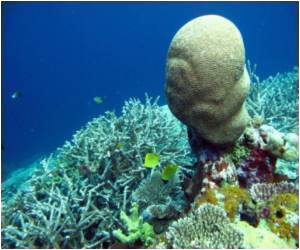
“These reefs occur in an area known as the mesophotic zone, or ‘twilight zone’ because of the lower light levels found there. They have been virtually unexplored because the reefs occur well below the depths accessible to most scuba divers,” Mr Bridge said.
The last few years have seen an increasing interest in deep water reefs around the world, however this was the first investigation of such habitats on the Great Barrier Reef.
Mr Bridge said the study used a recently developed robot, an Autonomous Underwater Vehicle (AUV), to investigate reef and seabed communities up to 150 metres deep along a 500 km length of the Great Barrier Reef.
Together with an international team of scientists, including University of Sydney scientist Dr Jody Webster and Dr Robin Beaman of JCU Cairns, Mr Bridge examined three sites offshore from Cairns, Townsville and Mackay.
Mr Bridge said the sites, which were located on the edge of the continental shelf, outside the outermost mapped reefs, all contained diverse coral communities comprised of a unique combination of corals.
Advertisement
“Bathymetric maps of the GBR shelf-edge suggest that these deep reef habitats may be widespread in the Great Barrier Reef Marine Park, however the vast majority of them are currently unexplored.
Advertisement
Mr Bridge said the AUV, which records a variety of data, was operated by the Australian Centre for Field Robotics at the University of Sydney.
Mr Bridge said the vehicle took stereo-images of the sea floor in the first instance. “These images overlap so they can be stitched together into a ‘mesh’, to form a 3D image of the seafloor”.
“We then used these 3D images to obtain accurate estimates of the rugosity, or topographic complexity, and slope of the substrate, which we used to explain the distribution of the reef communities.
“The AUV also collected a variety of other environmental data including multibeam swath bathymetry, conductivity-temperature-depth, turbidity and chlorophyll.”
The team’s paper was published in the latest edition of the journal Marine Ecology Progress Series.
Source-Medindia






